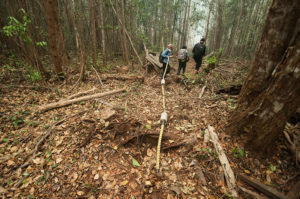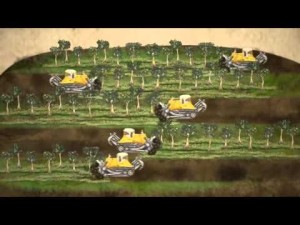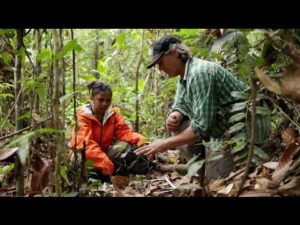
A group of 139 scientists, including from the CGIAR Research Program on Forests, Trees and Agroforestry, have published a letter in response to recent newspaper reports carrying comments made by a Malaysian government minister about the country’s peatlands.
The Minister of Modernisation, Agriculture and Rural Economy, Douglas Uggah Embas, described oil palm production – one of the biggest culprits in the destruction of Malaysia’s peatlands – as being “handled well” and “responsibly” in the country.
The comments were made to reporters by during an official dinner of the 16th International Peat Congress in Sarawak, in August, and were widely reported in regional media.
Writing in Global Change Biology, the scientists, representing 115 government, academic, industry and non-governmental organisations from 20 countries, describe the comments as a state of denial, with potentially “devastating consequences.”
The letter goes on to clarify that Mr Uggah’s view is not shared by the majority of the participants who attended the Congress, nor does it reflect the evidence presented there, which is backed by several decades of scientific research.

“Peat is an enormously valuable and extremely threatened resource,” said Louis Verchot, leader of CIAT’s Soils Research Program, and one of the scientists who signed the letter. “The Deputy Chief Minister is entitled to his opinion, but it is not shared by the vast majority of participants at the Congress, nor is it supported by science.
“It’s vital that these important issues are better understood. Our letter is an attempt to do that.”
The letter says that business-as-usual management of tropical peatland in SE Asia – which frequently includes burning to clear the land for oil palm plantation – is not sustainable and can no longer be justified.
Also read: Peatland loss could emit 2,800 years’ worth of carbon in an evolutionary eyeblink: study
1. What is peat?
Peat is what we call an organic soil, or in scientific terms, a histosol. It is made up of partially decayed plant matter (humus) that has accumulated in places with wet conditions where low levels of oxygen greatly slow the breakdown of organic matter.

2. Peat soils worldwide store as much carbon as the atmosphere
Soils worldwide store about three times as much carbon as is found in the atmosphere and one-third of this soil carbon is found in peat soils. In turn, tropical peatlands store at least one-third of the global peat carbon. We say “at least” because tropical peatlands are poorly mapped and many scientists believe that these estimates are low.
Science has consistently shown that draining and clearing of peat swamps – usually for agriculture – causes the release of very large quantities of carbon dioxide into the atmosphere.
3. Burning of peatlands and noxious smog
As well as draining peatlands for farming, the vegetation growing there is also cleared – usually by burning it. When the vegetation burns, the peat material often catches fire and even larger amounts of carbon dioxide along with other noxious chemicals (carbon monoxide, methane, nitric oxide, cyanide, formaldehyde and other aldehydes, ammonia, particulates (PM10 and PM2.5), etc. This has happened on such an enormous scale that it has resulted in the notorious Southeast Asian haze, a blanket of noxious smog that has enveloped major capitals in the region over the last few years.
4. Oil palm production is a major cause of deforestation in peatlands
Peatlands in Southeast Asia are being cleared at alarmingly high rates. Forest clearing generally in the region was about 1% per year between 2000 and 2010, but for peatlands the rate was more than double that, with oil palm a major driver there.
5. Draining peatlands for agriculture is unsustainable…
Tropical peatlands naturally form a dome of organic matter between two rivers. The area between the rivers can be several meters above these water courses. When peat is drained for production, the domes subside over time. As the surface lowers, water from the rivers floods into the peat. Thus, over time the area becomes seasonally flooded and finally permanently flooded. At this point it is no longer economically feasible to pump water out of the peatlands and agricultural production cannot be sustained in these areas. One estimate suggests that over 40% of the region’s coastal peatlands could be flooded within the next 25 years if current practices continue.
6…And the search for sustainable use of peatland continues
The scientists argue that truly sustainable uses of peatland for agriculture do not yet exist. They agree that finding a solution will require crops that can be grown in flooded conditions, and as yet no viable alternatives exist. There have been suggestions that some native trees that grow naturally in these flooded conditions might be domesticated such as Borneo Tallow Nut or Jelutung (a latex producing species). Maintaining the hydrological integrity of these systems will be essential for sustainability.











